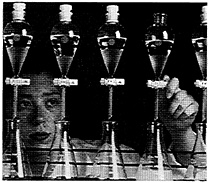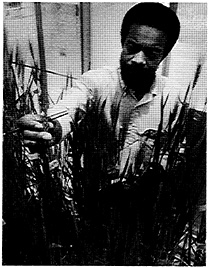
Though van Maanen turned out to be wrong, he was not ethically at fault. He was using methods that were accepted by the astronomical community as the best available at the time, and his results were accepted by most astronomers. But in hindsight he relied on a technique so susceptible to observer effects that even a careful investigator could be misled.
The fallibility of methods is a valuable reminder of the importance of skepticism in science. Scientific knowledge and scientific methods, whether old or new, must be continually scrutinized for possible errors. Such skepticism can conflict with other important features of science, such as the need for creativity and for conviction in arguing a given position. But organized and searching skepticism as well as an openness to new ideas are essential to guard against the intrusion of dogma or collective bias into scientific results.
VALUES IN SCIENCE
Scientists bring more than just a toolbox of techniques to their work. Scientist must also make complex decisions about the interpretation of data, about which problems to pursue, and about when to conclude an experiment. They have to decide the best ways to work with others and exchange information. Taken together, these matters of judgment contribute greatly to the craft of science, and the character of a person's individual decisions helps determine that person's scientific style (as well as, on occasion, the impact of that person's work).
Much of the knowledge and skill needed to make good decisions in science is learned through personal experience and interactions with other scientists. But some of this ability is hard to teach or even describe. Many of the intangible influences on scientific discovery—curiosity, intuition, creativity—largely defy rational analysis, yet they are among the tools that scientists bring to their work.
When judgment is recognized as a scientific tool, it is easier to see how science can be influenced by values. Consider, for example, the way people judge between competing hypotheses. In a given area of science, several different explanations may account for the available facts equally well, with each suggesting an alternate route for further research. How do researchers pick among them?
Scientists and philosophers have proposed several criteria by which promising scientific hypotheses can be distinguished from less fruitful ones. Hypotheses should be internally consistent so that they do not generate contradictory conclusions. Their ability to provide accurate experimental predictions, sometimes in areas far removed from the original domain of the hypothesis, is viewed with great favor. With disciplines in which experimentation is less straightforward, such as geology, astronomy, or many of the social sciences, good hypotheses should be able to unify disparate observations. Also highly prized are simplicity and its more refined cousin, elegance.
Other kinds of values also come into play in science. Historians, sociologists, and other students of science have shown that social and personal beliefs—including philosophical, thematic, religious, cultural, political, and economic beliefs—can
shape scientific judgment in fundamental ways. For example, Einstein's rejection of quantum mechanics as an irreducible description of nature—summarized in his insistence that "God does not play dice"—seems to have been based largely on an aesthetic conviction that the physical universe could not contain such an inherent component of randomness. The nineteenth-century geologist Charles Lyell, who championed the idea that geological change occurs incrementally rather than catastrophically, may have been influenced as much by his religious views as by his geological observations. He favored the notion of a God who is an unmoved mover and does not intervene in His creation. Such a God, thought Lyell, would produce a world in which the same causes and effects keep cycling eternally, producing a uniform geological history.
Does holding such values harm a person's science? In some cases the answer has to be "yes." The history of science offers a number of episodes in which social or personal beliefs distorted the work of researchers. The field of eugenics used the techniques of science to try to demonstrate the inferiority of certain races. The ideological rejection of Mendelian genetics in the Soviet Union beginning in the 1930s crippled Soviet biology for decades.
Despite such cautionary episodes, it is clear that values cannot—and should not—be separated from science. The desire to do good work is a human value. So is the conviction that standards of honesty and objectivity need to be maintained. The belief that the universe is simple and coherent has led to great advances in science. If researchers did not believe that the world can be described in terms of a relatively small number of fundamental principles, science would amount to no more than organized observation. Religious convictions about the nature of the universe have
|
POLYWATER AND THE ROLE OF SKEPTICISM The case of polywater demonstrates how the desire to believe in a new phenomenon can sometimes overpower the demand for solid, well-controlled evidence. In 1966 the Soviet scientist Boris Valdimirovich Derjaguin lectured in England on a new form of water that he claimed had been discovered by another Soviet scientist, N. N. Fedyakin. Formed by heating water and letting it condense in quartz capillaries, this "anomalous water," as it was originally called, had a density higher than normal water, a viscosity 15 times that of normal water, a boiling point higher than 100 degrees Centigrade, and a freezing point lower than zero degrees. Over the next several years, hundreds of papers appeared in the scientific literature describing the properties of what soon came to be known as polywater. Theorists developed models, supported by some experimental measurements, in which strong hydrogen bonds were causing water to polymerize. Some even warned that if polywater escaped from the laboratory, it could autocatalytically polymerize all of the world's water. Then the case for polywater began to crumble. Because polywater could only be formed in minuscule capillaries, very little was available for analysis. When small samples were analyzed, polywater proved to be contaminated with a variety of other substances, from silicon to phospholipids. Electron microscopy revealed that polywater actually consisted of finely divided particulate matter suspended in ordinary water. Gradually, the scientists who had described the properties of polywater admitted that it did not exist. They had been misled by poorly controlled experiments and problems with experimental procedures. As the problems were resolved and experiments gained better controls, evidence for the existence of polywater disappeared. |
also led to important scientific insights, as in the case of Lyell discussed above.

The empirical link between scientific knowledge and the physical, biological, and social world constrains the influence of values in science. Researchers are continually testing their theories about the world against observations. If hypotheses do not accord with observations, they will eventually fall from favor (though scientists may hold on to a hypothesis even in the face of some conflicting evidence since sometimes it is the evidence rather than the hypothesis that is mistaken).
The social mechanisms of science also help eliminate distorting effects that personal values might have. They subject scientific claims to the process of collective validation, applying different perspectives to the same body of observations and hypotheses.
The challenge for individual scientists is to acknowledge and try to understand the suppositions and beliefs that lie behind their own work so that they can use that self-knowledge to advance their work. Such self-examination can be informed by study in many areas outside of science, including history, philosophy, sociology, literature, art, religion, and ethics. If narrow specialization and a single-minded focus on a single activity keep a researcher from developing the perspective and fine sense of discrimination needed to apply values in science, that person's work can suffer.
CONFLICT OF INTEREST
Sometimes values conflict. For example, a particular circumstance might compromise—or appear to compromise—professional judgments. Maybe a researcher has a financial interest in a particular company, which might create a bias in scientific decisions affecting the future of that company (as might be the case if a researcher with stock in a company were paid to determine the usefulness of a new device produced by the company). Or a scientist might receive a manuscript or proposal to review that discusses work similar to but a step ahead of that being done by the reviewer. These are difficult situations that require trade-offs and hard choices, and the scientific community is still debating what is and is not proper when many of these situations arise.
Virtually all institutions that conduct research now have policies and procedures for managing conflicts of interest. In addition, many editors of scientific journals have established explicit policies regarding conflicts of interest. These policies and procedures are designed to protect the integrity of the scientific process, the missions of the institutions, the investment of stakeholders in institutions (including
|
A CONFLICT OF INTEREST John, a third-year graduate student, is participating in a department-wide seminar where students, postdocs, and faculty members discuss work in progress. An assistant professor prefaces her comments by saying that the work she is about to discuss is sponsored by both a federal grant and a biotechnology firm for which she consults. In the course of the talk John realizes that he has been working on a technique that could make a major contribution to the work being discussed. But his faculty advisor consults for a different, and competing, biotechnology firm.
|



